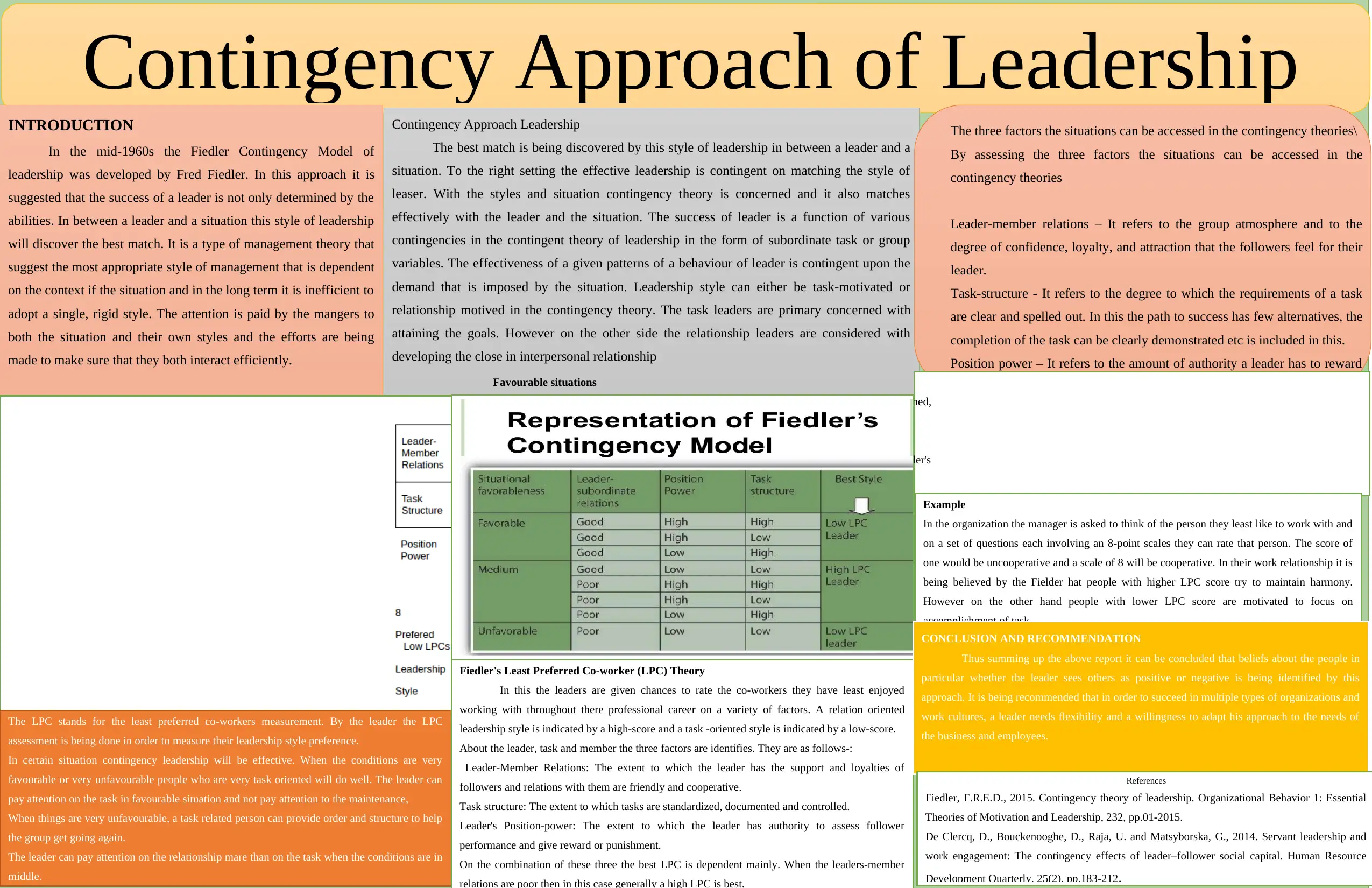Analysis of Fiedler's Contingency Model in Leadership: A Report
VerifiedAdded on 2020/06/03
|1
|1983
|131
Report
AI Summary
This report delves into the Contingency Approach to Leadership, focusing on Fred Fiedler's model, which posits that effective leadership depends on the interplay between a leader's style and situational factors. The report explains Fiedler's Least Preferred Co-worker (LPC) theory, which assesses a leader's orientation—task-motivated or relationship-motivated—based on their evaluation of their least preferred coworker. It explores how leader-member relations, task structure, and leader's position power influence situational favorability, and how this impacts the effectiveness of different leadership styles. The report highlights that task-oriented leaders perform well in very favorable or unfavorable situations, while relationship-oriented leaders excel in moderately favorable situations. It emphasizes the need for leaders to adapt their approach based on the specific context, rather than relying on a single, rigid style, providing a comprehensive overview of how leadership success is contingent on the demands of the situation.


![[object Object]](/_next/static/media/star-bottom.7253800d.svg)